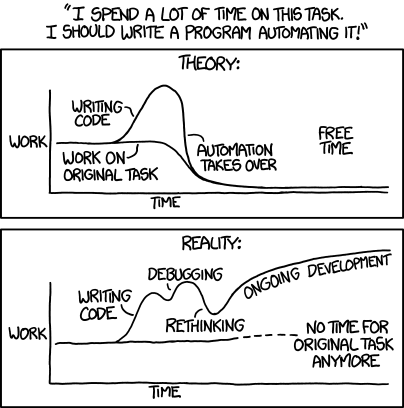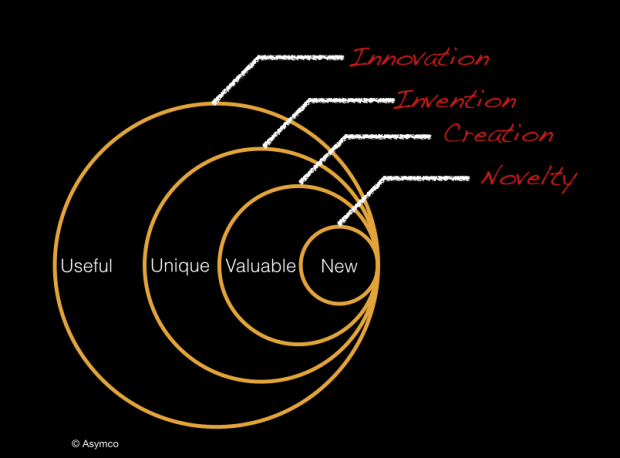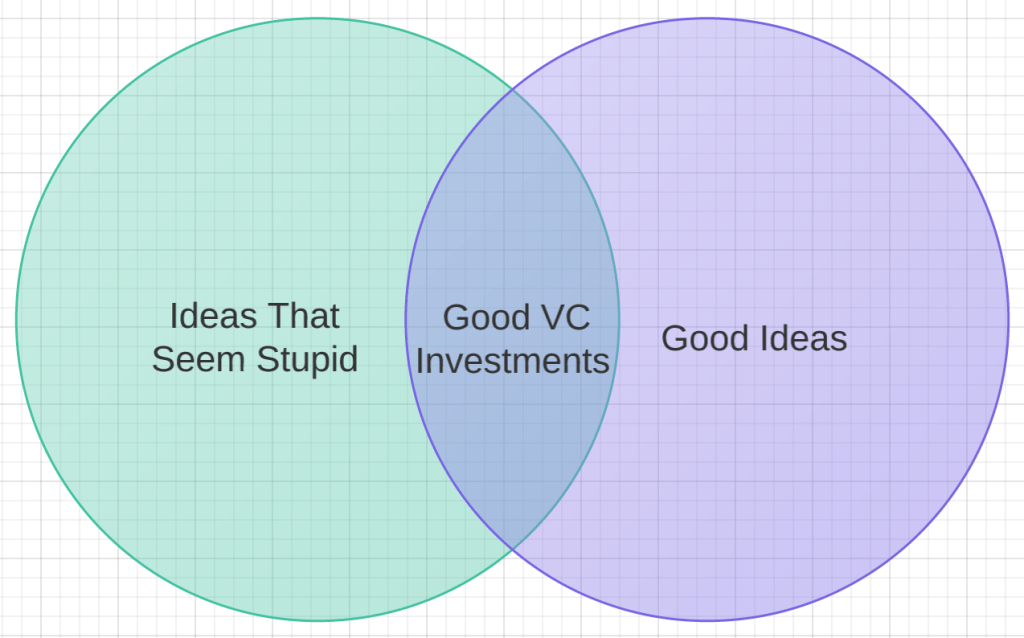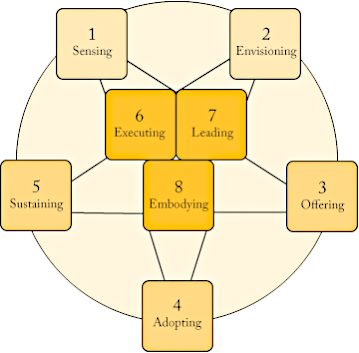Innovation is about finding a better way of doing something. Like many of the new development buzzwords (which many of them are over-used on many business documents), the concept of innovation originates from the world of business. It refers to the generation of new products through the process of creative entrepreneurship, putting it into production, and diffusing it more widely through increased sales. Innovation can be viewed as t he application of better solutions that meet new requirements, in-articulated needs, or existing market needs. This is accomplished through more effective products, processes, services, technologies, or ideas that are readily available to markets, governments and society. The term innovation can be defined as something original and, as a consequence, new, that “breaks into” the market or society.
Innoveracy: Misunderstanding Innovation article points out that there is a form of ignorance which seems to be universal: the inability to understand the concept and role of innovation. The way this is exhibited is in the misuse of the term and the inability to discern the difference between novelty, creation, invention and innovation. The result is a failure to understand the causes of success and failure in business and hence the conditions that lead to economic growth. The definition of innovation is easy to find but it seems to be hard to understand. Here is a simple taxonomy of related activities that put innovation in context:
- Novelty: Something new
- Creation: Something new and valuable
- Invention: Something new, having potential value through utility
- Innovation: Something new and uniquely useful
The taxonomy is illustrated with the following diagram.
The differences are also evident in the mechanisms that exist to protect the works: Novelties are usually not protectable, Creations are protected by copyright or trademark, Inventions can be protected for a limited time through patents (or kept secret) and Innovations can be protected through market competition but are not defensible through legal means.
Innovation is a lot of talked about nowdays as essential to businesses to do. Is innovation essential for development work? article tells that innovation has become central to the way development organisations go about their work. In November 2011, Bill Gates told the G20 that innovation was the key to development. Donors increasingly stress innovation as a key condition for funding, and many civil society organisations emphasise that innovation is central to the work they do.
Some innovation ideas are pretty simple, and some are much more complicated and even sound crazy when heard first. The is place for crazy sounding ideas: venture capitalists are gravely concerned that the tech startups they’re investing in just aren’t crazy enough:
Not all development problems require new solutions, sometimes you just need to use old things in a slightly new way. Development innovations may involve devising technology (such as a nanotech water treatment kit), creating a new approach (such as microfinance), finding a better way of delivering public services (such as one-stop egovernment service centres), identifying ways of working with communities (such as participation), or generating a management technique (such as organisation learning).
Theorists of innovation identify innovation itself as a brief moment of creativity, to be followed by the main routine work of producing and selling the innovation. When it comes to development, things are more complicated. Innovation needs to be viewed as tool, not master. Innovation is a process, not a one time event. Genuine innovation is valuable but rare.
There are many views on the innovation and innvation process. I try to collect together there some views I have found on-line. Hopefully they help you more than confuze. Managing complexity and reducing risk article has this drawing which I think pretty well describes innovation as done in product development:
8 essential practices of successful innovation from The Innovator’s Way shows essential practices in innovation process. Those practices are all integrated into a non-sequential, coherent whole and style in the person of the innovator.
In the IT work there is lots of work where a little thinking can be a source of innovation. Automating IT processes can be a huge time saver or it can fail depending on situation. XKCD comic strip Automation as illustrates this:

System integration is a critical element in project design article has an interesting project cost influence graphic. The recommendation is to involve a system integrator early in project design to help ensure high-quality projects that satisfy project requirements. Of course this article tries to market system integration services, but has also valid points to consider.
Core Contributor Loop (CTTDC) from Art Journal blog posting Blog Is The New Black tries to link inventing an idea to theory of entrepreneurship. It is essential to tune the engine by making improvements in product, marketing, code, design and operations.






5,658 Comments
Tomi Engdahl says:
https://112.fi/en/frontpage/-/asset_publisher/9yHW6eAYD5eE/content/emergency-number-112-introduced-in-the-eu-30-years-ago-1?_com_liferay_asset_publisher_web_portlet_AssetPublisherPortlet_INSTANCE_9yHW6eAYD5eE_assetEntryId=83671055
Tomi Engdahl says:
https://nypost.com/2022/11/19/pong-inventor-made-steve-jobs-work-nights-because-of-his-b-o/
Tomi Engdahl says:
HOW THE GRAPHICAL USER INTERFACE WAS INVENTED
Three decades of UI research came together in the mice, windows, and icons used today
https://spectrum.ieee.org/graphical-user-interface
Tomi Engdahl says:
https://arstechnica.com/gaming/2022/11/just-a-bunch-of-idiots-having-fun-a-photo-history-of-the-lan-party/
Tomi Engdahl says:
Quantum Particles Aren’t Spinning. So Where Does Their Spin Come From?
A new proposal seeks to solve the paradox of quantum spin
https://www.scientificamerican.com/article/quantum-particles-arent-spinning-so-where-does-their-spin-come-from/?utm_term=Autofeed&utm_medium=Social&utm_source=Facebook#Echobox=1669124584
Electrons are proficient little magicians. They seem to flit about an atom without tracing a particular path, they frequently appear to be in two places at once, and their behavior in silicon microchips powers the computing infrastructure of the modern world. But one of their most impressive tricks is deceptively simple, like all the best magic. Electrons always seem to spin. Every electron ever observed, whether it’s just ambling its way about a carbon atom in your fingernail or speeding through a particle accelerator, looks like it’s constantly doing tiny pirouettes as it makes its way through the world. Its spinning never appears to slow or speed up. No matter how an electron is jostled or kicked, it always looks like it’s spinning at exactly the same speed. It even has a little magnetic field, just like a spinning object with electric charge should. Naturally, physicists call this behavior “spin.”
But despite appearances, electrons don’t spin. They can’t spin; proving that it’s impossible for electrons to be spinning is a standard homework problem in any introductory quantum physics course. If electrons actually spun fast enough to account for all of the spinlike behavior they display, their surfaces would be moving much faster than the speed of light (if they even have surfaces at all). Even more surprising is that for nearly a century, this seeming contradiction has just been written off by most physicists as yet another strange feature of the quantum world, nothing to lose sleep over.
Tomi Engdahl says:
Team Films the Speed of Light at 10 Trillion Frames Per Second And It’s Incredible
http://amazingastronomy.thespaceacademy.org/2022/09/team-films-speed-of-light-at-10.html?m=1
Tomi Engdahl says:
Researchers discover how music could be used to trigger a deadly pathogen release
https://techxplore.com/news/2022-11-music-trigger-deadly-pathogen.html
Researchers at the University of California, Irvine have discovered that the safe operation of a negative pressure room—a space in a hospital or biological research laboratory designed to protect outside areas from exposure to deadly pathogens—can be disrupted by an attacker armed with little more than a smartphone.
According to UCI cyber-physical systems security experts, who shared their findings with attendees at the Association for Computing Machinery’s recent Conference on Computer and Communications Security in Los Angeles, mechanisms that control airflow in and out of biocontainment facilities can be tricked into functioning irregularly by a sound of a particular frequency, possibly tucked surreptitiously into a popular song.
“Someone could play a piece of music loaded on their smartphone or get it to transmit from a television or other audio device in or near a negative pressure room,”
Tomi Engdahl says:
Electricity-Generating Yarn Makes Wearable Circuits as Simple and Cheap as Embroidery
Creating triboelectric nano-generators (TENGs) through simple embroidery, this wearables platform shows promise.
https://www.hackster.io/news/electricity-generating-yarn-makes-wearable-circuits-as-simple-and-cheap-as-embroidery-e7cb818b2e15
Tomi Engdahl says:
https://www.iflscience.com/scientist-create-ultrawhite-paint-so-reflective-it-can-cool-buildings-even-in-bright-sunlight-57578
Tomi Engdahl says:
https://phys.org/news/2022-11-scientists-world-continuous-wave-lasing-deep-ultraviolet.html
Tomi Engdahl says:
”Ikiaikaisen massiivinen” läpimurto matematiikassa? – Einsteinin tavoin työskennellyt ja 2013 legendaksi noussut omintakeinen matemaatikko julkaisi uuden todistuksen
https://www.tekniikkatalous.fi/uutiset/ikiaikaisen-massiivinen-lapimurto-matematiikassa-einsteinin-tavoin-tyoskennellyt-ja-2013-legendaksi-noussut-omintakeinen-matemaatikko-julkaisi-uuden-todistuksen/5044fd1d-7ad1-4594-9c10-7f1e231d475e
Tomi Engdahl says:
https://www.quantamagazine.org/can-machines-control-our-brains-20210517/
Tomi Engdahl says:
https://www.icdrex.com/will-graphene-replace-silicon-as-a-semiconductor-material/
Tomi Engdahl says:
“Stop. Go. Stop.” The brain’s basic signals for walking and running are simple, but recent work shows that more complex calculations control some goal-oriented movements — such as when a running tennis player needs to stop at an exact spot on the court. https://www.quantamagazine.org/the-brain-uses-calculus-to-control-fast-movements-20221128/
Tomi Engdahl says:
https://hackaday.com/2022/11/22/new-metric-prefixes-get-bigger-and-smaller/
Tomi Engdahl says:
https://hackaday.com/2022/11/28/app-detects-parkinsons-disease-and-covid-19-via-audio/
Tomi Engdahl says:
Ashlee Vance / Bloomberg:
Musk says Neuralink expects human trials to begin in about six months pending FDA approval, and unveils work on implants to treat paralysis and improve vision — Elon Musk’s Neuralink Corp. aims to start putting its coin-sized computing brain implant into human patients within six months …
Musk’s Neuralink Hopes to Implant Computer in Human Brain in Six Months
https://www.bloomberg.com/news/articles/2022-12-01/musk-s-neuralink-hopes-for-human-trials-approval-within-six-months#xj4y7vzkg
The startup awaits implant approval while already working on curing paralysis
Tomi Engdahl says:
https://hackaday.com/2022/12/01/ask-hackaday-when-it-comes-to-processors-how-far-back-can-you-go/
Tomi Engdahl says:
https://www.quantamagazine.org/physicists-create-a-wormhole-using-a-quantum-computer-20221130/
Tomi Engdahl says:
Scientists simulate ‘baby’ wormhole without rupturing space and time
Theoretical achievement hailed, though sending people through a physical wormhole remains in the realms of science fiction
https://www.theguardian.com/science/2022/dec/01/scientists-simulate-baby-wormhole-without-rupturing-space-and-time#Echobox=1669879382
Tomi Engdahl says:
Neuroscientist Explains Why Some People Are More Prone To Believing Conspiracies
https://www.iflscience.com/neuroscientist-explains-why-some-people-are-more-prone-to-believing-conspiracies-58152
Tomi Engdahl says:
SCIENTISTS SUGGEST OUR BRAINS WORK LIKE QUANTUM COMPUTERS
https://futurism.com/the-byte/brains-work-like-quantum-computers
Tomi Engdahl says:
Huge 15-Tonne Meteorite Contains Two Minerals Never Seen Before In Nature
The finding of at least two novel minerals in a large meteorite from Somalia could offer clues to how asteroids form.
https://www.iflscience.com/huge-15-tonne-meteorite-contains-two-minerals-never-seen-before-in-nature-66434
Tomi Engdahl says:
Liquid-Metal Stretchy Circuits, Built With Sound Encase metallic droplets in plastic for elastic electronics
https://spectrum.ieee.org/flexible-electronics-made-with-sound
Tomi Engdahl says:
It’s Official: Astronomers Have Discovered another Earth
https://news.sci-nature.com/2022/11/its-official-astronomers-have_27.html
Tomi Engdahl says:
For years IQ scores were on the rise, but now that trend is reversing. Are we all getting stupider?
The Flynn Effect: After IQ Increased For Decades, Are We Now Getting Stupider?
https://www.iflscience.com/the-flynn-effect-after-iq-increased-for-decades-are-we-now-getting-stupider-66438
For years IQ scores were on the rise, but now that trend is reversing. Are we all getting stupider?
Before we get into the Flynn effect and the steady increase (and possible subsequent decrease) in IQ scores across the world, we should probably talk about the elephant in the room: there are all kinds of problems with IQ tests.
The Flynn effect, unfortunately, may have its limits, and humanity is not just going to get marginally smarter every decade until we are all just massive brains in vats sat around discussing episodes of Frasier. A study of Norwegian conscripts, who were measured using IQ tests for half a century, has shown a decline in IQ from the mid-1990s. An Australian test on children has shown no improvement in IQ scores between 1975 and 2003. Tests in the UK have shown a drop of about 2-6 points (depending on age group) between 1980 and 2008.
Tomi Engdahl says:
https://www.iflscience.com/the-term-alpha-male-is-all-a-lie-66483
Tomi Engdahl says:
Fatherhood Changes Men’s Brains, According To Before-And-After MRI Scans
https://www.iflscience.com/fatherhood-changes-men-s-brains-according-to-before-and-after-mri-scans-66461
Neuroscientists know that pregnant mothers’ brains change in ways that appear to help with caring for a baby. Now, researchers have identified changes in new fathers’ brains, too.
Tomi Engdahl says:
Billionaire Melinda French Gates wants to create an alternative to Silicon Valley: ‘To change it would be incredibly hard’
https://www.cnbc.com/2022/10/05/melinda-french-gates-wants-silicon-valley-alternative-for-women.html?utm_content=Main&utm_medium=Social&utm_source=Facebook#Echobox=1669666561
Tomi Engdahl says:
Elon Muskin terveysteknologiayritys Neuralink alkaa pian testata kehittämäänsä aivoimplanttia ihmisillä. Myös miljardööri itse kertoi aikovansa asentaa implantin omiin aivoihinsa.
Elon Musk kehittää aivoimplanttia, jonka aikoo asentaa myös itselleen
https://www.iltalehti.fi/ulkomaat/a/1704ef89-dba2-4134-acd4-3fed9ab908c8?utm_medium=Social&utm_source=Facebook#Echobox=1669971945
Implantin kliinisten kokeiden on tarkoitus alkaa puolessa vuodessa. Tähän mennessä implanttia on testattu eläimillä.
Tomi Engdahl says:
VIDEO SHOWS HUMAN BRAIN CELLS IN DISH TEACHING THEMSELVES TO PLAY A VIDEOGAME
THIS IS INCREDIBLE.
https://futurism.com/neoscope/video-brain-cells-dish-play-videogame
Tomi Engdahl says:
Magnetic Solution To Microplastics Crisis Works In Hours Not Days
Microplastics are filling our oceans and waterways because filters are too slow to remove them, but a novel approach works fast in laboratory testing.
https://www.iflscience.com/magnetic-solution-to-microplastics-crisis-works-in-hours-not-days-66495
Tomi Engdahl says:
Tinnitus Can Be Silenced For Up To A Year With Tongue-Zapping Device
https://www.iflscience.com/tinnitus-can-be-silented-for-up-to-a-year-with-new-tonguezapping-device-57442
Tomi Engdahl says:
We can now use cells from dead people to create new life. But who gets to decide?
This is why it’s important to tell partners or parents whether you’d want your eggs, sperm or embryos to be used after you’ve died.
https://www.technologyreview.com/2022/11/25/1063694/cells-dead-people-new-life-who-decides/
Tomi Engdahl says:
Neuralink’s testing has reportedly killed around 1,500 animals, a number that employees say is significantly higher than it needed to be because of Musk’s push for speed.
Musk’s Neuralink Link Under Federal Investigation Over Alleged Animal Welfare Abuses, Report Says
https://www.forbes.com/sites/siladityaray/2022/12/06/musks-neuralink-link-under-federal-investigation-over-alleged-animal-welfare-abuses-report-says/?utm_campaign=forbes&utm_source=facebook&utm_medium=social&utm_term=Gordie
Elon Musk’s Neuralink—which promises to enable a direct interface between the human brain and computers—is being investigated by the federal government for alleged violation of the Animal Welfare Act, Reuters reported on Monday citing staff complaints about animal testing standards at the company.
Tomi Engdahl says:
Can You Catch A Cold From Being Cold? Scientists Say Yes, And It Turns Out The Answer Was Right Under Our Noses
https://www.forbes.com/sites/roberthart/2022/12/06/can-you-catch-a-cold-from-being-cold-scientists-say-yes-and-it-turns-out-the-answer-was-right-under-our-noses/?utm_campaign=forbes&utm_source=facebook&utm_medium=social&utm_term=Gordie
A newly discovered immune response inside the nose could explain why respiratory illnesses like RSV, Covid, the common cold and flu thrive in winter, according to research published Tuesday in The Journal of Allergy and Clinical Immunology, a finding that challenges the conventional wisdom that infections spread because people are stuck indoors and signposts ways to develop new treatments.
When faced with bacterial intruders, research shows that cells in the front of the nose unleash a barrage of small fluid-filled sacs as part of an immune response designed to attack and neutralize possible threats.
Based on experiments exposing nasal cell and tissue samples to three viruses that cause the common cold—two rhinoviruses and a coronavirus (not the one responsible for Covid-19)—the research showed the nose also uses the tactic to defend against viral threats.
To test whether colder conditions affect this response, the researchers used healthy volunteers to measure how much the temperature inside the nose dropped after moving from a room temperature environment and spending 15 minutes at around 40°F (4.4° C).
The researchers exposed the nasal cell samples to a similar drop in temperature—around 9°F (5° C)—to emulate the real-world drop.
The immune response was markedly reduced at this lower temperature, the researchers found, which they said gives the first biological mechanism explaining why viral illnesses are common in winter
The findings signpost potential directions for future research testing the finding with other viruses and in humans and animals, the researchers said, as well as developing new treatments such as nasal sprays.
CRUCIAL QUOTE
“We’ve uncovered a new immune mechanism in the nose that is constantly being bombarded, and have shown what compromises this protection,” said one of the study’s authors, Dr. Mansoor Amiji, a professor at Northeastern University’s School of Pharmacy. “The question now changes to, ‘How can we exploit this natural phenomenon and recreate a defensive mechanism in the nose and boost this protection, especially in colder months?’”
KEY BACKGROUND
Though there is a clear and obvious connection linking cold weather and illnesses like the common cold, experts have been less clear as to why this connection exists. The common dictate that you can catch a cold from the cold is simplistic.
NEWS PEG
Measures put in place to guard against Covid-19 during the pandemic dampened the usual gamut of respiratory infections like RSV (respiratory syncytial virus), the common cold and flu. Many of these are now making comebacks and are expected to collide with a spike in Covid as well. Pediatric hospitals in the U.S. are already struggling with the surge in RSV, which is particularly dangerous to very young children, as well as the elderly.
Newly Discovered Immune Response Explains Why We Get Sick When It’s Cold
https://www.iflscience.com/newly-discovered-immune-response-explains-why-we-get-sick-when-it-s-cold-66510
You have an army in your nose waiting to fight off infection, but only half of them turn up when it’s cold.
New research has finally pinned down an physiological change that explains why we are so much more prone to certain respiratory infections when the weather is lousy. The discovery is the first biological mechanism to explain why the common cold, flu and COVID-19 see such significant seasonal spikes when the weather is colder in certain regions, and could help us work on better preventative measures.
Tomi Engdahl says:
“Those people who think they know everything are a great annoyance to those of us who do.”
— Isaac Asimov
Tomi Engdahl says:
I need a shirt that says:
“We do it my way, or don’t hire me.”
Tomi Engdahl says:
Suomen LUMA-osaaminen on heikentynyt. Erityisasiantuntija Anniina Sippola ottaisi mallia Virosta, jonka tulokset ovat erinomaisia.
https://insinoori-lehti.fi/tasta-on-kysymys/otetaan-oppia-virosta/?fbclid=IwAR0rQNXFfPe7LlAdJhqWPyaTX4Zjwzh-uXV_1lRJRSbrWorzC1tpB5dlO3o
Tomi Engdahl says:
The 10 Kinds Of Programmers That Use Calcutron-33
https://hackaday.com/2022/12/07/the-10-kinds-of-programmers-that-use-calcutron-33/
It is interesting how, if you observe long enough, things tend to be cyclical. Back in the old days, some computers didn’t use binary, they used decimal. This was especially true of made up educational computers like TUTAC or CARDIAC, but there was real decimal hardware out there, too. Then everyone decided that binary made much more sense and now it’s very hard to find a computer that doesn’t use it.
But [Erik] has written a simulator, assembler, and debugger for Calcutron-33, a “decimal RISC” CPU. Why? The idea is to provide a teaching platform to explain assembly language concepts to people who might stumble on binary numbers. Once they understand Calcutron, they can move on to more conventional CPUs with some measure of confidence.
https://github.com/ordovician/calcutron
Tomi Engdahl says:
https://hackaday.com/2022/12/05/asbestos-the-miracle-mineral-of-our-worst-nightmares/
Tomi Engdahl says:
To Be or Not to Be a Diode? It Depends on Temperature Gradient
Dec. 7, 2022
A sophisticated halide material can go from diode to non-diode and back depending on the temperature differential across its terminals.
Bill Schweber
https://www.electronicdesign.com/technologies/analog/article/21255975/electronic-design-to-be-or-not-to-be-a-diode-it-depends-on-temperature-gradient?utm_source=EG+ED+Analog+%26+Power+Source&utm_medium=email&utm_campaign=CPS221201041&o_eid=7211D2691390C9R&rdx.identpull=omeda|7211D2691390C9R&oly_enc_id=7211D2691390C9R
Tomi Engdahl says:
Apple tutkii yli viisi kertaa Nokiaa enemmän
https://etn.fi/index.php/13-news/14358-apple-tutkii-yli-viisi-kertaa-nokiaa-enemmaen
Tomi Engdahl says:
When you work different jobs, you can identify where ideas interact — and more significantly, where they should interact.
Why You Should Have (at Least) Two Careers
https://hbr.org/2017/04/why-you-should-have-at-least-two-careers?utm_medium=social&utm_campaign=hbr&utm_source=facebook&tpcc=orgsocial_edit
It’s not uncommon to meet a lawyer who’d like to work in renewable energy, or an app developer who’d like to write a novel, or an editor who fantasizes about becoming a landscape designer. Maybe you also dream about switching to a career that’s drastically different from your current job. But in my experience, it’s rare for such people to actually make the leap. The costs of switching seem too high, and the possibility of success seems too remote.
Tomi Engdahl says:
Kuuma startup-trendi sai tuomion: rajoittaa luovuutta
https://www.tivi.fi/uutiset/tv/6dbbdaf1-a1e5-453f-8044-064b26ff7857
Erityisesti startupien suosimat coworking-tilat eli yhteisölliset työtilat eivät välttämättä ole pidemmän päälle toimiva ratkaisu. Näin antaa ymmärtää tuore tutkimus, jossa tarkkailtiin yhtä Euroopan suurimmista yhteisöllisistä työtiloista. Tutkimuksesta uutisoi EurekAlert.
Tomi Engdahl says:
https://etn.fi/index.php/13-news/14363-sinkki-voi-korvata-litiumin
Tomi Engdahl says:
Koko sivilisaation mullistanut löytö tehtiin vuonna 1820 – mutta miksi juuri Euroopassa?
Kalevi Rantanen10.12.2022 19:02HistoriaTekniikkaKoneet ja laitteetTiede
Miksi uusi luonnonilmiö sähkömagnetismi keksittiin vuonna 1820, ja nimenomaan Euroopassa?
https://www.tivi.fi/uutiset/koko-sivilisaation-mullistanut-loyto-tehtiin-vuonna-1820-mutta-miksi-juuri-euroopassa/a18692f0-b4d4-4d55-bb25-779647d6093c
Tomi Engdahl says:
Earlier this year, the first brain-computer interface was successfully implanted into a paralyzed patient, enabling them to independently communicate with someone using a computer. This goal, which once seemed like science fiction, is now reality, and a number of companies are currently racing to hit similar milestones for a variety of different applications.
Among them is Axoft, which was founded in 2021 by researcher Paul Le Floch and aims to use soft, flexible materials to develop brain implant technology that can treat neurological conditions like cerebral palsy as well as enable communication.
This Under 30 CEO Is Building Next Generation Brain Implants
https://www.forbes.com/sites/oliviapeluso/2022/10/21/this-under-30-ceo-is-building-next-generation-brain-implants/?sh=21c4cf406f97&utm_campaign=socialflowForbesMainFB&utm_medium=social&utm_source=ForbesMainFacebook
We frequently ask our founders if they’re planning (or banking on) selling their company, and the vast majority say something along the lines of “Hell, no.” For some, the idea of an exit feels like losing a part of themselves, something they’ve invested the better chunks of their bank accounts and schedules into creating. Some build a business off acquiring others. And of course, some do–despite their initial predications–sell their companies.
Move Over, Elon: This Under 30 CEO Just Raised $8 Million To Build A Next-Generation Brain Implant
Tomi Engdahl says:
Suomalainen läpimurtotutkimus: viisi ylivoimaista keinoa pienentää muistisairauden riskiä
https://www.iltalehti.fi/terveysuutiset/a/e33d9719-bbbc-4559-b298-8192d4b6d6c5
Salakavala muistisairaus voi alkaa mitättömän tuntuisella sanojen ja tapahtumien unohtelulla. Suomalaistutkimuksen mukaan elämäntavoilla ja kuntoutuksella voi kuitenkin ennaltaehkäistä muistioireita sekä hidastaa jo alkaneen sairauden oireita.
Joka kolmas yli 65-vuotias suomalainen ilmoittaa kärsivänsä muistioireista. Aina niiden syynä ei ole vakava tai etenevä muistisairaus, sillä esimerkiksi stressi, uupumus, masennus, univaje tai runsas alkoholinkäyttö voivat heikentää muistin toimintaa ja aiheuttaa ongelmia tiedon käsittelyssä.
5 keinoa pienentää muistisairauden riskiä (Finger-malli)
1. Etusormi – Ravitsemus
Koko elinkaaren aikainen monipuolinen ravitsemus on äärimmäisen tärkeää. Yksittäisten ruoka-aineiden tai vitamiinien sijasta oleellisempaa on kiinnittää huomiota ruokapyramidin mukaiseen, monipuoliseen ravitsemukseen. Myös syömisen sosiaalinen puoli on tärkeää etenkin ikääntyville.
2. Keskisormi – Liikunta
Aivot tykkäävät liikunnasta. Kaikki askeleet lasketaan ja mitä enemmän aikaa ollaan jalkeilla, sitä vähemmän sitä jää haitalliselle ja passivoivalle istumiselle. Arkiliikunta, kestävyysliikunta sekä lihaskunto- ja tasapainoharjoittelu muodostavat aivoterveyden kannalta tärkeän liikuntapaletin perustan.
3. Nimetön – Aivojumppa
Aivan kuten lihakset ja keho tarvitsevat liikuntaa, myös aivot tarvitsevat tekemistä. Kaikki uusi toiminta ja oppiminen on aivoille hyväksi. Käytännönläheinen tekeminen, käsityöt, keskustelut, lukeminen tai uuden kielen tai taidon opiskelu ovat aivoille tehokasta jumppaa. Muista, että muistia voi myös treenata! Käy kaupassa ilman listaa ja yritä muistaa ulkoa, mitä kaikkea pitikään ostaa.
4. Pikkusormi – sosiaalinen aktiivisuus
Aivot tarvitsevat aktiivisuutta ja lepoa. Myös sosiaalinen komponentti on aivoille tärkeä ja siksi ihminen tarvitseekin aktiviteetteja, jotka virkistävät kehon lisäksi myös mieltä. Ystävien seura ja kiinnostavat keskustelut ruokkivat aivoja ja antavat niille uusia ärsykkeitä.
5. Peukalo – Sydän- ja verisuoniterveys
Kaikki mikä on hyväksi sydämelle, on hyväksi myös aivoille. Sydän- ja verisuoniterveydestä huolehtiminen on äärimmäisen tärkeää, sillä korkea verenpaine ja kolesteroli altistavat muistisairauksille. Niiden, sekä diabeteksen lääkehoito voivat pienentää muistisairauksien riskiä.
Sydän- ja verisuoniterveydestä huolehtiminen vaikuttaa laajasti terveyteen, ennaltaehkäisee monia fyysisiä sairauksia ja ylläpitävää toimintakykyä. Omaa terveyttä kuvaavat luvut on hyvä selvittää viimeistään keski-iässä.
Tomi Engdahl says:
https://hackaday.com/2022/12/15/retrotechtacular-a-1960s-look-at-the-21st-century-home/